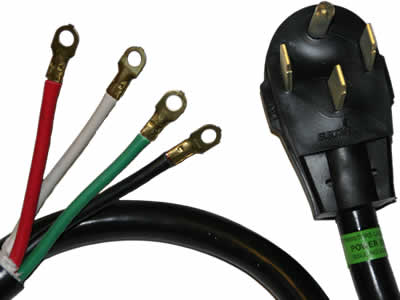> Now I don't measure 120V between my two grounds in the different outlets anymore.
Good, but......
> ground was left floating at this point. White/black on that 2-wire were swapped (white=hot, black=neutral).
The 3-light tester "should" have flagged this "open ground".
(It could not also know of the white/black swap; no reference.)
So why was the 3-lite saying "OK!"?? There's many things it won't diagnose, but an open ground is drop-dead easy.
I have a bad feeling there is a white-ground short somewhere. That's something the 3-lite can't sense; indeed it can only be found by inspection, gross abuse (pull line current and see if ground rises), or with fancy sensing (the new arc-fault breakers required for bedrooms circuits are finding lots of such faults).
> the attic ground connects up to neutral in the junction box where the 2-wire terminates in the attic.
NO! That is NOT legal per NEC!! White and ground shall meet ONLY at the "service entrance", generally the main fusebox.
For the EXACT reason you saw. Faults which make White "live" are sorta-benign, but live-White which also makes Appliance Case "hot" is deadly.
He's shut-up your 3-lite, and momentarily eliminated the shocks. If the old cloth cable were in PERFECT shape and carefully watched, it might be "safe enough". But the cable is old and the junctioning is dubious.
(Which of your two "main fuseboxes" is MAIN is an interesting question.).
> ground wire should follow the same path back to the panel as the Hot and Neutral.
That's customary and normal and best. I'm not sure it is *required* under NEC. (Altho an exposed ground wire must be fat to resist mechanical damage.)
As you say, loop-area is bad for audio and some gigantic transients (lightning induction).
There are indeed layers of problems. First: family and pet deaths and injury. Second, killing mini-plugs may be justifiable but should be done with hammer and fire, not loose electricity. Finally, clean quiet environment for audio work. Landlords can be yelled-at for the first, requested for the second, but generic rental space does not assure clean audio (that's what $$$/hour studio space is for).
Where's your rig? Attic? How big/hot? Not? Big radio stations? Then get a 24-outlet power strip, put EVERYthing on that, and don't go near lights or radiators. I did hundreds of gigs on 2-pin ungrounded power. It's OK as long as everything references each other.
Good, but......
> ground was left floating at this point. White/black on that 2-wire were swapped (white=hot, black=neutral).
The 3-light tester "should" have flagged this "open ground".
(It could not also know of the white/black swap; no reference.)
So why was the 3-lite saying "OK!"?? There's many things it won't diagnose, but an open ground is drop-dead easy.
I have a bad feeling there is a white-ground short somewhere. That's something the 3-lite can't sense; indeed it can only be found by inspection, gross abuse (pull line current and see if ground rises), or with fancy sensing (the new arc-fault breakers required for bedrooms circuits are finding lots of such faults).
> the attic ground connects up to neutral in the junction box where the 2-wire terminates in the attic.
NO! That is NOT legal per NEC!! White and ground shall meet ONLY at the "service entrance", generally the main fusebox.
For the EXACT reason you saw. Faults which make White "live" are sorta-benign, but live-White which also makes Appliance Case "hot" is deadly.
He's shut-up your 3-lite, and momentarily eliminated the shocks. If the old cloth cable were in PERFECT shape and carefully watched, it might be "safe enough". But the cable is old and the junctioning is dubious.
(Which of your two "main fuseboxes" is MAIN is an interesting question.).
> ground wire should follow the same path back to the panel as the Hot and Neutral.
That's customary and normal and best. I'm not sure it is *required* under NEC. (Altho an exposed ground wire must be fat to resist mechanical damage.)
As you say, loop-area is bad for audio and some gigantic transients (lightning induction).
There are indeed layers of problems. First: family and pet deaths and injury. Second, killing mini-plugs may be justifiable but should be done with hammer and fire, not loose electricity. Finally, clean quiet environment for audio work. Landlords can be yelled-at for the first, requested for the second, but generic rental space does not assure clean audio (that's what $$$/hour studio space is for).
Where's your rig? Attic? How big/hot? Not? Big radio stations? Then get a 24-outlet power strip, put EVERYthing on that, and don't go near lights or radiators. I did hundreds of gigs on 2-pin ungrounded power. It's OK as long as everything references each other.



